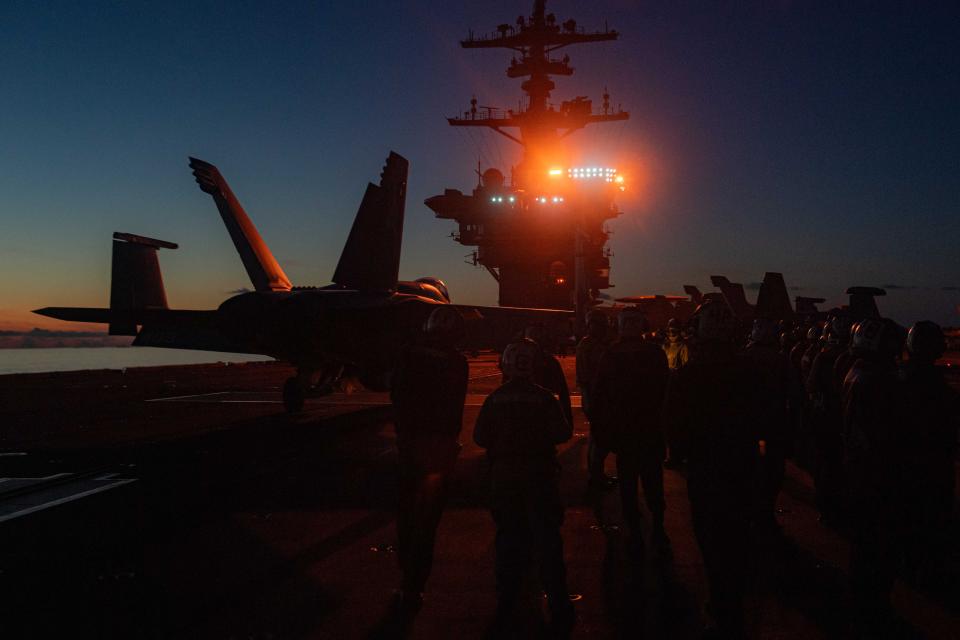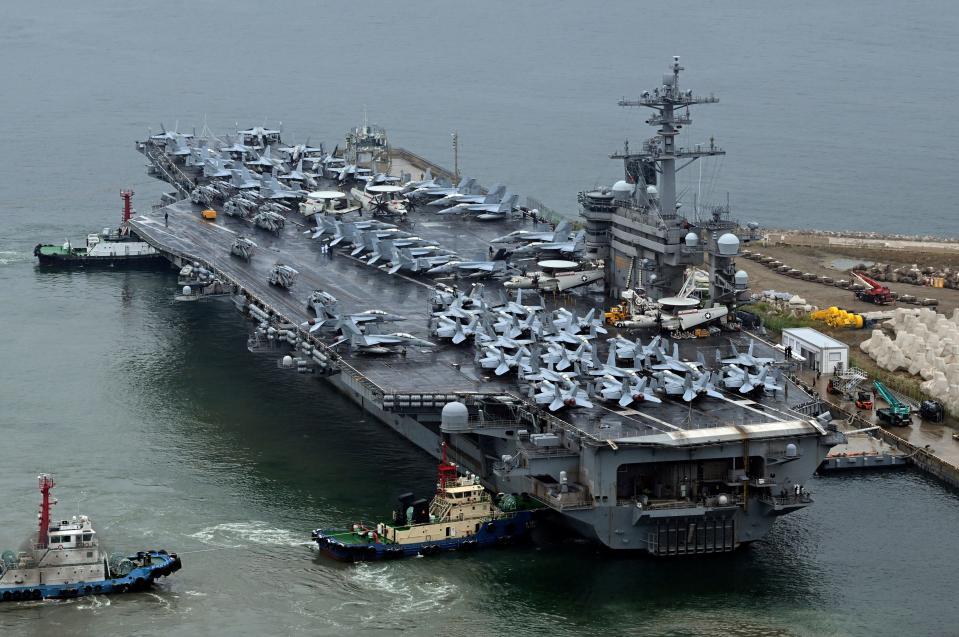Demands in the Middle East risk leaving an aircraft carrier-sized hole in US naval power in the Western Pacific
The aircraft carrier USS Theodore Roosevelt is on its way to the Middle East after exercises in Asia.
Its departure will leave the US Navy without a carrier in the Western Pacific region unless another can be tasked to the area.
If not, soon the only carriers operating in the area may be China's.
Ongoing conflicts in the Middle East are drawing the US military's focus and risk leaving the US Navy without any aircraft carriers operating in the Western Pacific, which is home to a major US rival and longtime foes.
The only US carrier in the area is on its way to the Middle East following a series of military drills in the Pacific. Meanwhile, China continues to demonstrate its ambitions with a growing fleet of carriers while American adversaries stir unease.
Late last month, the USS Theodore Roosevelt Carrier Strike Group arrived in South Korea for a joint exercise with its host nation and Japan. While the exercise was pre-planned, it came at a tense time in the region, just days after Russian President Vladimir Putin and North Korean leader Kim Jong Un signed a historic defense pact that has had far-reaching geopolitical reverberations.
When the Roosevelt and the other elements of the strike group arrived, the South Korean navy said that the presence of the Nimitz-class nuclear-powered carrier and the other US warships "demonstrates the strong combined defense posture of the South Korea-US alliance and their firm resolve to respond to the escalating threats from North Korea."
After the exercise wrapped up, the Roosevelt strike group set sail for Middle Eastern waters, where it will take over the defense of commercial shipping lanes in the Red Sea and Gulf of Aden. After USS Gerald R. Ford and the Dwight D. Eisenhower, the Roosevelt is the third aircraft carrier that has been sent to respond to the fighting in the Middle East ignited by the Israel-Hamas war.

The steady movement of the Roosevelt out of the Western Pacific and the departure of USS Ronald Reagan before that risks leaving an aircraft carrier-shaped hole in the US Navy's presence in the region at a time when Russia and North Korea are creating new headaches for US ally South Korea and China is increasingly conducting its own carrier operations and flexing its muscles against another US ally, the Philippines.
Business Insider was unable to reach the Pentagon for comment on carrier movements or US force posture in the Western Pacific.
The USNI News fleet tracker indicated on July 1 that USS Carl Vinson was in the Eastern Pacific around Hawaii for the big Rim of the Pacific (RIMPAC) naval exercise while the Roosevelt appeared to be working its way toward the South China Sea. USS Carl Vinson is available for necessary tasking, but it lacks the presence provided by a forward-deployed carrier.
On July 2, the Roosevelt strike group was in the Philippine Sea, according to imagery and information from what is known as DVIDS, or the Defense Visual Information Distribution Service.

As the Roosevelt travels to keep up the seeminglty endless fight against the Houthis, China's navy has been active. The aircraft carrier Shandong and a Chinese amphibious assault ship conducted an exercise in the South China Sea earlier this week.
The Shandong is one of two Chinese Soviet-style carriers. The warship features a ski-jump-style ramp like its predecessor, Liaoning. China's newest carrier, Fujian, has a catapult launch system similar to the one on the US Navy's new Ford-class carriers.
China's carriers — the speed at which they're building and fielding them, as well as how and where they're operating them — demonstrate a focus in Beijing on building a carrier fleet capable of projecting military power in the region and potentially globally.
Lately, China has also ramped up altercations with the Philippines in contested waters in the South China Sea. Just late last month, Chinese personnel armed with machetes and spears attacked Filipino navy personnel in disputed waters. The Coast Guard, however, has taken charge in this spat, as opposed to the navy.
Read the original article on Business Insider

